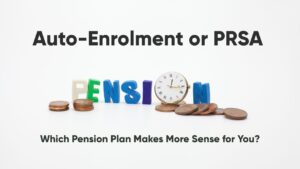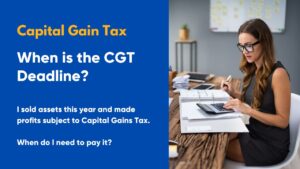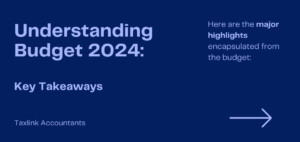Are you a business owner or startup who is ready to launch their product / Service?
If yes, then you will learn 10 winning Pricing Strategies with Real-Life Examples
Then setting a right price for it highly important for the business success and if you are looking for a small business accountant to help with accounting services, we are here to help.
Let’s move to pricing strategies for your product.
Pricing strategy is a crucial aspect of any business, as it directly affects a company’s revenue and profitability.
A winning pricing strategy not only helps companies to sell their products or services but also enables them to stay ahead of the competition.
An effective pricing strategy can significantly impact the company’s sales, making it essential for business owners to be familiar with different pricing strategies.
Pricing Strategies with Real-Life Examples
With this article will discuss 10 popular pricing strategies used by businesses, including examples of successful implementations by big brands.
Price Skimming
Price skimming is a strategy where a company sets a high initial price for a new product or service, targeting early adopters who are willing to pay a premium. As the market becomes saturated and competitors enter, the company gradually lowers the price to attract more price-sensitive customers.
Example: Apple is a classic example of a company that uses price skimming. They often launch new products, such as iPhones and iPads, at high prices, which are then reduced over time as newer models are introduced.
Penetration Pricing
Penetration pricing involves setting a low initial price for a new product or service to quickly gain market share and attract customers away from competitors.
This strategy aims to create a strong customer base, which can later be leveraged for higher prices or upselling.
Example: Netflix used penetration pricing when it first launched its streaming service. By offering a low monthly subscription fee, Netflix attracted a large customer base, which it later monetized through price increases and additional services.
Competitive Pricing
Competitive pricing is a strategy where a company sets its prices based on the prices of competitors. This approach helps businesses to position themselves as a better value option or to match the perceived value of similar products or services in the market.
Example: Walmart is a prime example of a company that uses competitive pricing. They consistently offer products at low prices, often matching or beating competitors’ prices to attract cost-conscious customers.
Also Read: The minimum wage and living wage rates in Ireland for 2023
Premium Pricing
Premium pricing involves setting high prices for products or services that are perceived to be of superior quality or have unique features. This strategy aims to create an image of exclusivity, targeting customers who are willing to pay more for a premium experience.
Example: Luxury brands like Rolex and Louis Vuitton use premium pricing to create an image of high quality and exclusivity, justifying their higher prices.
Loss Leader Pricing
Loss leader pricing is a strategy where a company sells a product or service at a price below its cost, with the aim of attracting customers who will also buy other, more profitable products.
This approach can help businesses to increase sales volume and customer loyalty.
Example: Supermarkets often use loss leader pricing on popular products, such as milk or bread, to entice customers into their stores, where they are likely to make additional purchases at higher profit margins.
Psychological Pricing
Psychological pricing involves setting prices that appeal to customers’ emotions or perceptions of value. One common example is the use of “charm pricing,” where prices end in .99 or .95, making them seem more affordable to consumers.
Example: Most retailers, including Amazon and Target, use psychological pricing to make products appear more affordable. By pricing items at €9.99 instead of €10.00, customers perceive the price as lower and are more likely to make a purchase.
Value Pricing
Value pricing is a strategy that focuses on providing customers with the best possible value for their money. This approach involves setting prices based on the perceived value of the product or service, rather than solely on cost or competitor pricing.
Example: IKEA is a company that employs value pricing, offering well-designed, functional furniture at affordable prices. Their pricing strategy reflects the value customers receive in terms of design, quality, and functionality.
Also Read: Why SMEs must not ignore the correspondence from Revenue
Bundle Pricing
Bundle pricing involves selling multiple products or services together at a discounted price. This strategy can encourage customers to purchase more items than they initially intended and increase the perceived value of the offer.
Example: Microsoft Office is a perfect example of bundle pricing, as they offer various software applications, such as Word, Excel, and PowerPoint, together as a package for a lower price than if purchased separately.
Freemium Pricing
Freemium pricing is a strategy where a company offers a basic version of a product or service for free while charging for additional features or premium services. This approach can help businesses attract a large user base and convert a percentage of those users to paying customers.
Example: Spotify uses a freemium pricing model, offering a free, ad-supported version of their music streaming service and a premium subscription with additional features and no ads.
Dynamic Pricing
Dynamic pricing involves adjusting prices based on real-time supply and demand factors, customer behavior, or market conditions. This strategy allows businesses to maximize profits by capitalizing on fluctuations in demand or customer willingness to pay.
Example: Uber uses dynamic pricing, also known as “surge pricing,” to adjust fares based on real-time demand. During periods of high demand, prices increase to encourage more drivers to be available and balance supply with demand.
By exploring these ten popular pricing strategies, business owners can determine the best approach for their products or services, taking into account factors such as target market, competition, and product value.
Ultimately, a well-thought-out pricing strategy can lead to increased sales, customer loyalty, and long-term business growth.
Need an Accountant in Dublin? Talk to us now











